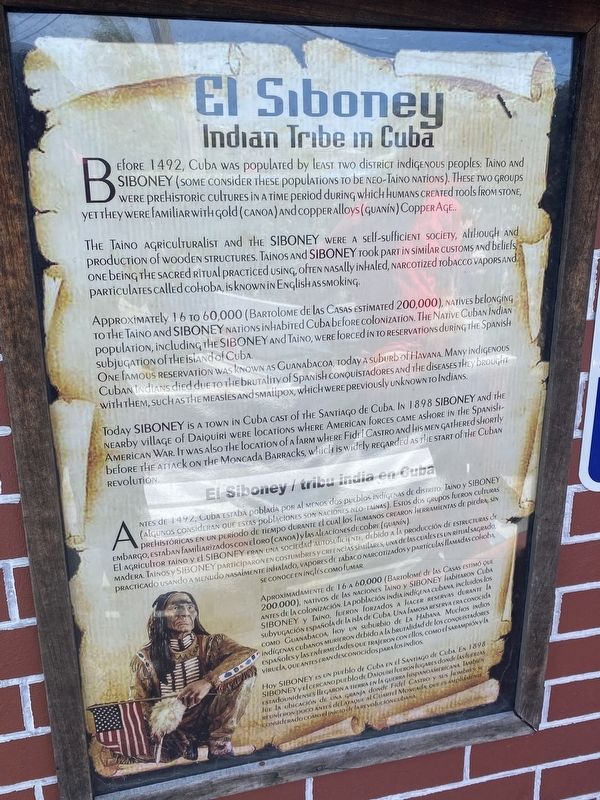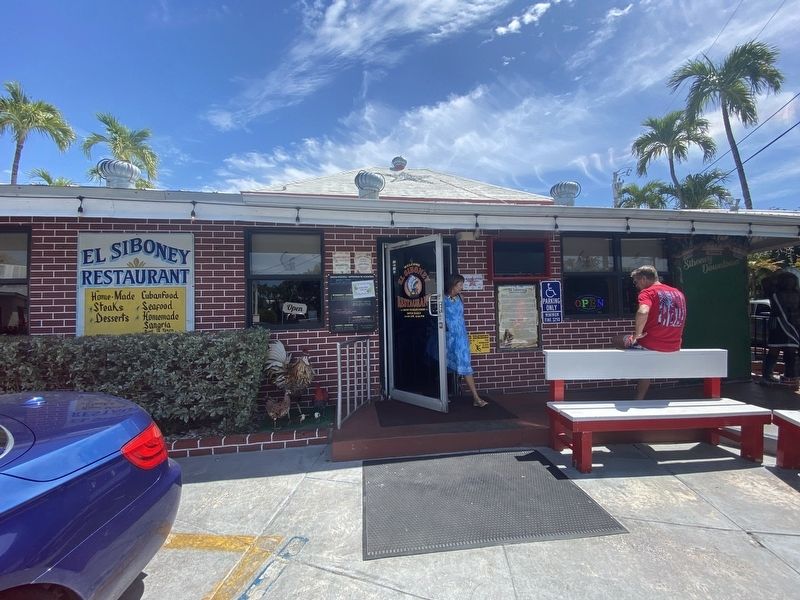Key West in Monroe County, Florida — The American South (South Atlantic)
El Siboney
Before 1492, Cuba was populated by at least two distinct indigenous peoples: Taino and Siboney (some consider these populations to be Neo-Taino Nations). These two groups were prehistoric cultures in a time period during which humans created tools from stone, yet they were familiar with gold (Canoa) and copper alloy (Guanin) Copper Age.
The Taino agriculturalist and the Siboney were a self-sufficient society, although and production of wooden structures. Tainos and Siboney took part in similar customs and beliefs, one being the sacred ritual practiced using, often nasally inhaled, narcotized tobacco vapors and particulates called Cohoba, is known in English as smoking.
Approximately 16 to 60,000 (Bartolome de las Casas estimated 200,000), natives belonging to the Taino and Siboney nations inhabited Cuba before colonization. The Native Cuban Indian population, including the Siboney and Taino, were forced into reservations during the Spanish subjugation of the island of Cuba.
One famous reservation was known as Guanabacoa, today a suburb of Havana. Many indigenous Cuban Indians died due to the brutality of Spanish conquistadores and the diseases they brought with them, such as the measles and smallpox, which were previously unknown to Indians.
Today Siboney is a town in Cuba east of the Santiago de Cuba. In 1898 Siboney and the nearby village of Daiquiri were locations where American forces came ashore in the Spanish-American War. It was also the location of a farm where Fidel Castro and his men gathered shortly before the attack on the Moncada barracks, which is widely regarded as the start of the Cuban Revolution.
Topics. This historical marker is listed in these topic lists: Anthropology & Archaeology • Colonial Era • Native Americans • Settlements & Settlers. A significant historical year for this entry is 1492.
Location. 24° 33.127′ N, 81° 47.579′ W. Marker is in Key West, Florida, in Monroe County. Marker is at the intersection of Catherine Street and Margaret Street, on the left when traveling west on Catherine Street. Touch for map. Marker is at or near this postal address: 900 Catherine St, Key West FL 33040, United States of America. Touch for directions.
Other nearby markers. At least 8 other markers are within walking distance of this marker. Ferdinand Hirsh Cigar Factory (about 400 feet away, measured in a direct line); Fire Station #9 (about 600 feet away); Basilica of St. Mary Star of the Sea (approx. 0.2 miles away); La Brisa House (approx. 0.2 miles away); 729 Truman Ave. (approx. 0.2 miles away); Gato Village Pocket Park (approx. 0.2 miles away); Convent Of Mary Immaculate (approx. ¼ mile away); War of 1898 (approx. ¼ mile away). Touch for a list and map of all markers in Key West.
Credits. This page was last revised on April 16, 2024. It was originally submitted on March 29, 2024, by Darren Jefferson Clay of Duluth, Georgia. This page has been viewed 42 times since then. Photos: 1, 2. submitted on April 16, 2024, by Darren Jefferson Clay of Duluth, Georgia. • Devry Becker Jones was the editor who published this page.

